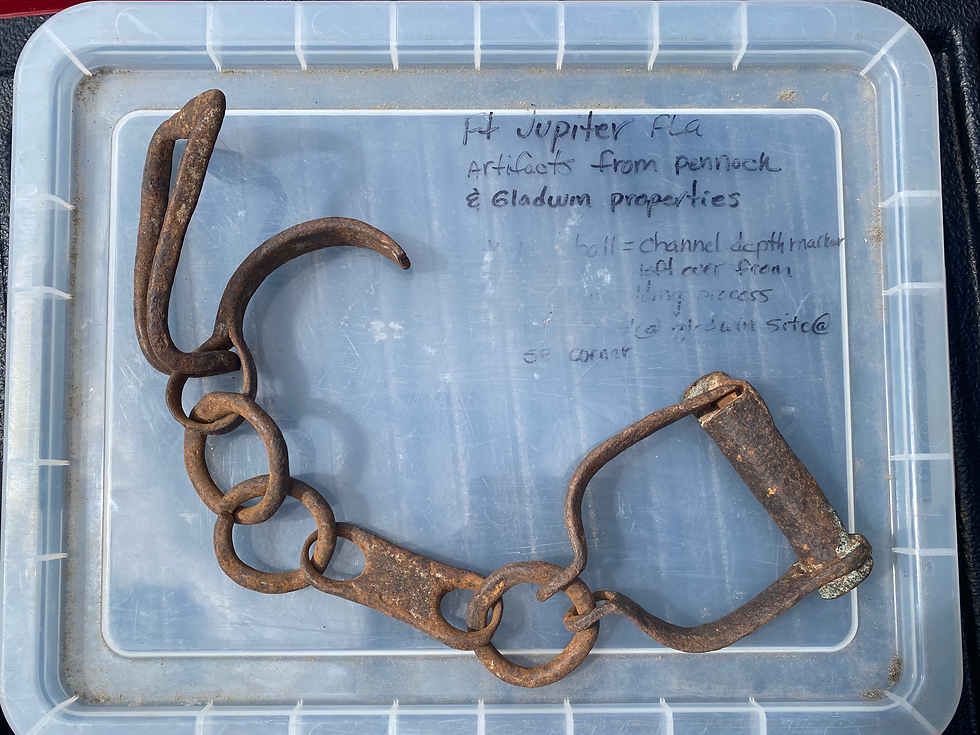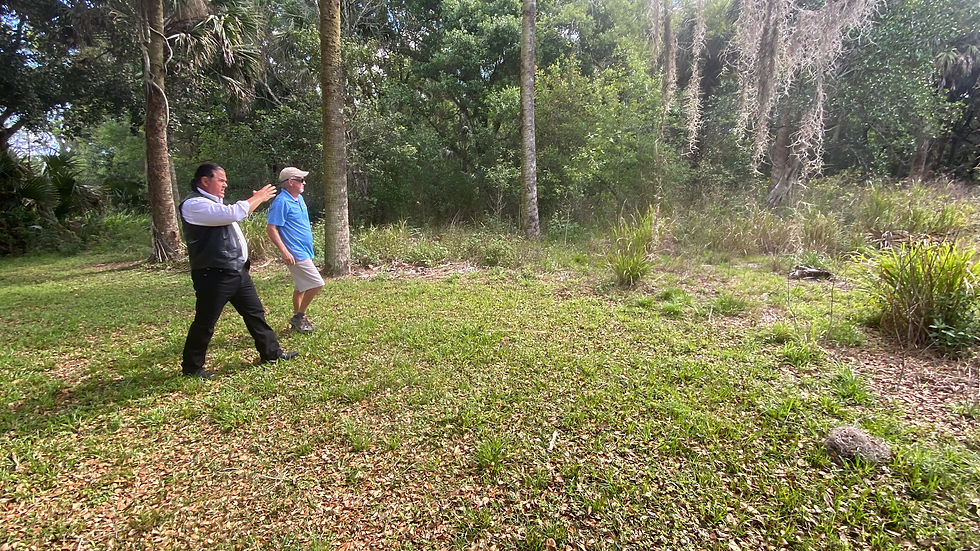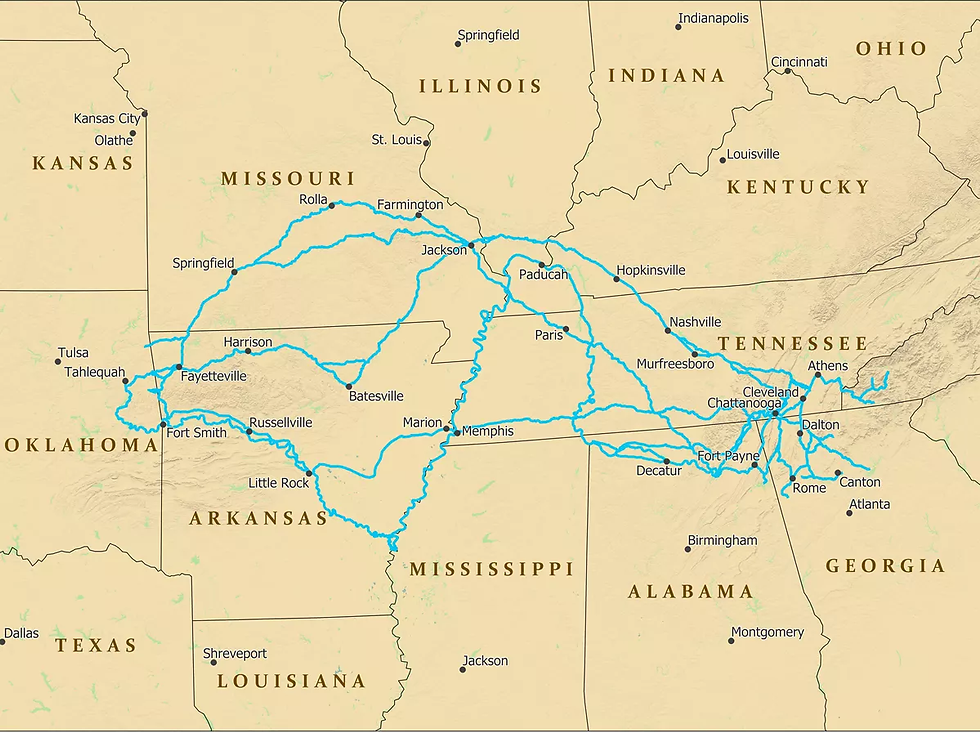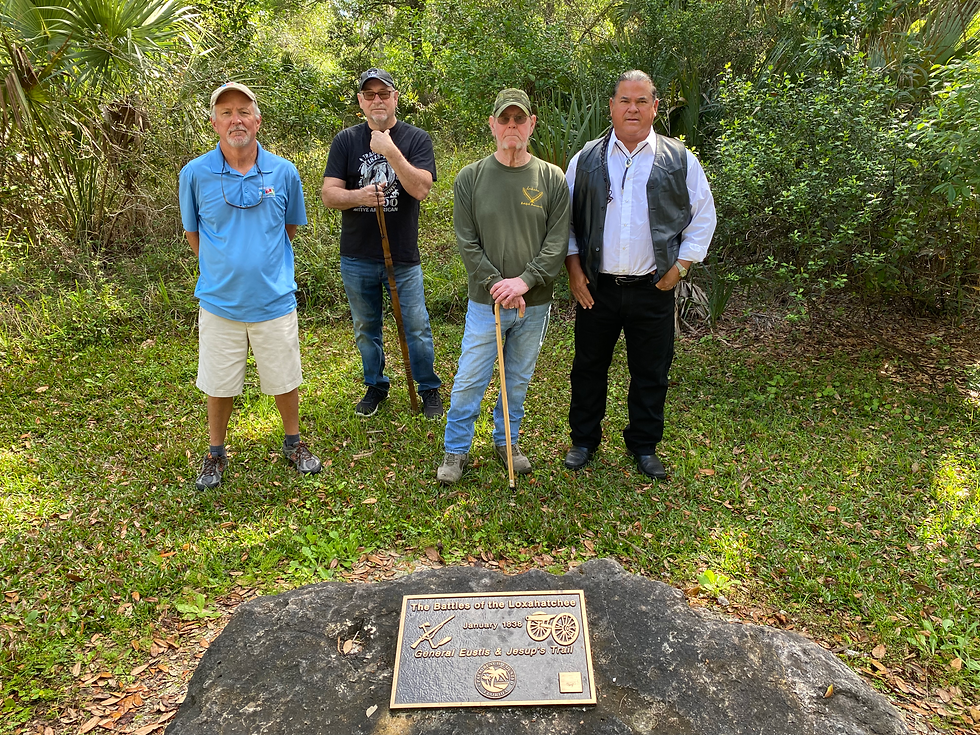
ON A SUNDAY morning early next month, members of the Great Seminole Nation of Oklahoma will march through a gate off Indiantown Road and into Loxahatchee River Battlefield Park in Jupiter.
Instead of dodging gunfire, as their Florida ancestors did when they were driven off the same land by U.S. troops in the 1838 Battle of the Loxahatchee, they’ll be welcomed as returning heroes.
In what local historians are calling a landmark event, their visit to the county park will mark the first time in 184 years that Oklahoma Seminoles are retracing the footsteps their ancestors took when they were forcibly marched along the Florida leg of the Trail of Tears to settlements in Oklahoma.
The ceremony at 8 a.m. on April 3 will cap off a weekend of events at the Convocation of Seminole War Historians, held every two years in Florida since 2017. This year’s convocation marks the first time Oklahoma Seminole Nation leaders will share their side of that history on Florida soil.

“We are very excited to be going down to Florida for this convocation,’’ said Jake Tiger, cultural technician for the Seminole Nation of Oklahoma. “It'll be good for us to be in our homelands where our spirits can connect when we get there.”
When the convocation ends, the Oklahoma Seminoles will head south for a few days to visit leaders from the Seminole Tribe of Florida on reservation lands between Hollywood and Big Cypress Preserve.
“These people coming home for the first time in 184 years is a major, major deal,’’ said Glenn Bakels of the Loxahatchee Battlefield Preservationists, the non-profit group hosting the convocation.
“The fact that the Seminole tribe (of Florida) is going to be here to meet them is even more astounding,’’ he said. “This is going to be history.’’

Bakels is among a passionate group of historians intent on preserving and promoting Palm Beach County’s rich connection with the Seminole Wars, a mission launched in the early 1990s with the discovery in Riverbend Park of musket balls, buttons, hand-forged iron spikes and other military artifacts from the Second Seminole War in 1838.
With support from Karen Marcus, the Palm Beach County district commissioner at the time, their work led to the creation in 2010 of Loxahatchee River Battlefield Park on 64 acres carved out of the northwest corner of Riverbend Park.

On April 2, Marcus will join LBP President Holly Torres and county archeologist Chris Davenport in offering welcoming remarks for the convocation at the Jupiter Community Center, 200 Military Trail.
They will be followed at the podium by Oklahoma Seminole leaders, including Nation Chief Lewis Johnson, who will share their oral histories of events that sent their Florida ancestors to Oklahoma.
“The removal process brought a lot of my people to Oklahoma Indian territory,’’ said Tiger. “It’s my passion to honor and my responsibility to share that knowledge with the Seminole people so we aren't lost in time.’’

The Battle of Loxahatchee was actually two battles nine days apart in January 1838, marking the end of organized resistance in the Second Seminole War.
After the war, the Seminoles who eluded capture fled into the Everglades. Some returned and lived in the area of Riverbend Park into the 1870s.


But 830 captives were marched in shackles to Fort Jupiter, located on present day Pennock Point (not far from a waterfront home owned by tennis star Venus Williams).
From there, they marched west to Fort Brooke in Tampa where they were chained into boats that ferried them to New Orleans and to Fort Gibson in Oklahoma.

“They walked out of here to Oklahoma never to be seen again,’’ Siggy Second Jumper, a Chiricahua Apache descendent living in Stuart, said as he walked through Battlefield Park the other day on a preparation visit with park coordinator Pat Rash.
Just about all written records of the battles, including the fates of the Seminole captives, are based on accounts from one source, the U.S. military. Local historians have long wondered about the Oklahoma Seminoles’ version of events, oral histories passed on through generations.

Second Jumper, who over the years established contacts with Oklahoma Seminoles while researching two books he wrote about his own ancestral history, was able to help LBP leaders reach out to the Oklahoma Seminoles with an invitation to the Jupiter convocation.
The local historians “also wanted to reconnect those Seminoles that left Jupiter in 1838 with those that remained in Florida unconquered. It was a tall order,’’ he said.
Both groups of Seminoles accepted the invitation.
The convocation next month will mark the first time Oklahoma Seminoles will share their oral histories on land off their reservation, Bakels said.

“With no disrespect to the military’s record, we decided to consider the Native American side of the story, which is primarily oral,’’ Bakels said.
“To a formal scholar, the oral record does not carry as much weight as the written military record. But (the Oklahoma Seminoles) have never had a chance to ever tell their side of the story. This year we are calling the convocation ‘In Their Own Voices.’ This will be a majority of native American speakers who will be able to tell their own story from their own point of view.’’
The result should offer an enriched historical record, not a rewritten record.
“We are trying to tell the story from a new and fresh perspective,’’ said historian Steve Carr. “Having the Oklahoma Seminoles here is big. It allows people to focus on the reality of this country’s past.’’

Later this year, LBP plans to petition the National Trail of Tears Association to officially certify the Florida Trail of Tears segment.
The association now recognizes Trail of Tears sites in Arkansas, Alabama, George, Illinois, Kentucky, Missouri, North Carolina, Oklahoma and Tennessee.
LBP members hope the Seminole Nation of Oklahoma’s participation in the Jupiter convocation next month will give the petition a significant boost.
“We are lucky that in this county we have a preserved section of the original trail of tears,’’ Carr said.

Tickets to the first two days of the convocation, including an opening night reception on April 1, are $60 and can be purchased by registering at the Loxahatchee Battlefield Preservationists website. The fee will be waived for local Native Americans, including members of Florida’s Seminole and Miccosukee tribes.
Admission is free to everyone attending the ceremony Sunday morning at Loxahatchee River Battlefield Park. It starts at 8 a.m.

“To have them come back to the same grounds that they fought and died and walked down, it's never been done before. I am honored to be a small part of that,’’ Second Jumper said.
“This is actually a National Geographic moment that's taking place. Imagine you haven't returned to your homeland in 184 years. Imagine being greeted by your kin. Imagine tracing the footsteps of your ancestors for the first time ever. If you can put yourself in their spot you can see how significant it is.’’
© 2022 ByJoeCapozzi.com All rights reserved.
About the author

Joe Capozzi is an award-winning reporter based in Lake Worth Beach. He spent more than 30 years in the newspaper business, mostly at The Palm Beach Post, where he wrote about the opioid scourge, invasive pythons, the birth of the Ballpark of the Palm Beaches and Palm Beach County government. For 15 years, he covered the Miami Marlins baseball team. Joe left The Post in December 2020. View all posts by Joe Capozzi.

